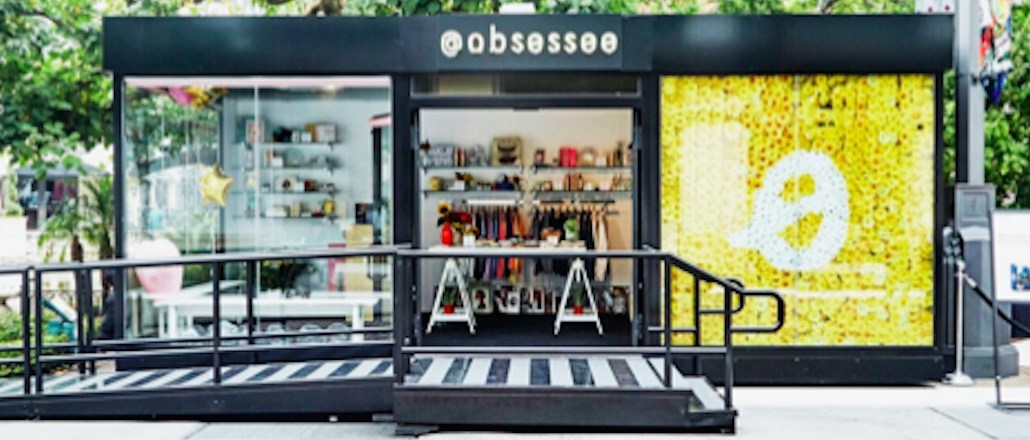Register by Jan 13 to save on passes and connect with marketers from Uber, Bose and more

This week, Business Insider reported that Amazon would open dozens of pop-ups across U.S. shopping malls over the next year. These storefronts would act as a way to showcase tech products like the Echo speakers. In a job post hiring for these stores, the company said that pop-up stores have “emerged from the test phase with a goal to expand and grow.”
Amazon is the latest major brand to experiment with pop-ups, temporary storefronts that brands use as test beds or a way to communicate with customers who normally shop them online. Pop-ups have long been around for artists to open temporary galleries or chefs to test new dining concepts. (The history of pop-ups is unclear, although experts say that Commes des Garcons’ 2004 pop-up in Berlin was the real turning point for retail brands.)
But more than ever before, the rise of online shopping has got big retailers suffering from pop-up fever. Pop-Up Republic, a database tool for retailers, said that as of March, the pop-up shop industry is valued at $50 billion, although that includes other temporary outings like food trucks and flea markets. The consultancy said that as U.S. retailers are seeing increasing online shopping, they should provide a real-life experience that can be more exciting for shoppers.
According to an April report created by J. Walter Thompson in collaboration with Women’s Wear Daily, pop-ups are a direct response to the growing phenomenon of “frontierless retail,” where digital and physical realms are merging. That means that retailers are grappling with more people turning to online shopping (87 percent of U.S. millennials regularly buy things online) but also need to fill the physical gap, since those same millennials say they want to have more “experiences.”
“Brands are able to control the environment in these pop-up stores; they can create a holistic experience,” said Ben James, executive creative director at JWT, who pointed to the example of Capital One’s “cafe” pop-up in New York that had little to do with home loans but more about creating this idea that banks could be a place to hang out. (It’s now closed.)
Pop-ups eliminate the need for expensive overhead since they are usually smaller and temporary, and they give retailers flexibility to only push certain products, at certain times.
For example, running brand Tracksmith earlier this year opened a pop-up shop just for the Boston Marathon with a twist: You could only buy certain products if you had qualified for the race. And Obsessee, a “social” brand launched by Clique Media Group, hosted a pop-up at The Grove in Los Angeles in August to give its target market, digital-native Gen Z-ers, “real-life experiences” to bridge the online and offline worlds.

According to the brand, it saw a 13 percent brand life in followers across platforms during the pop-up and the store sold over 1,700 items.
While retail brands are big into pop-up stores, it’s also en vogue among others. Refinery29 is running this week a 29-room pop-up space for people to experience fashion week. Magnum Ice Cream held a pop-up event in June for people to make customized ice-cream bars. Singaporean beer brand Tiger hosted a pop-up shop in Soho in June so people could come in and look at modern Asian art and design. It’s a way to combine product sales, experiences and a brand presence all in one, on the (relatively) cheap.
In some cases, pop-ups are used as test beds. That can be to test a market: Canadian retailer Kit & Ace credits that strategy with how it was able to open 63 locations in two years — a five-year pace. Lacey Norton, head of retail at the company, which was founded by Chip Wilson’s wife and son, Shannon and JJ Wilson, said that opening up pop-ups is a way to be first-to-market without committing too much. It’s also what Elizabeth Arden did this year when it took its first temporary boutique in Paris and turned it into a large flagship store.
And for some retailers, it’s used to test new types of products. In March, Kate Spade opened a pop-up shop for its collection of home goods that only ran for two months. “Our brick-and-mortar stores are the pinnacle of the Kate Spade New York brand experience,” the brand’s CMO, Mary Beech said. The pop-up both increased brand awareness, it also had an impact on the company’s e-commerce business, she said. “We saw our penetration of NYC-area home customers on katespade.com nearly double.”

For fashion retailers that want to test different logistics methods of showing and delivering to customers, couture designers are also able to use temporary stores as a way to see if it’ll work, with minimal risk. Alexander Wang used a pop-up truck method at New York Fashion Week to test “see-now-buy-now” logistics. “We’re getting to this place where the brand and the product are coming together to mingle in the single environment,” said James.
More in Marketing

Inside the brand and agency scramble for first-party data in the AI era
Brands are moving faster to own first-party data as AI and privacy changes alter the digital advertising landscape.

Walmart Connect takes a play out of the Amazon playbook to make agentic AI the next battleground in retail media
The next retail media war is between Walmart Connect’s Sparky and Amazon’s Rufus, driven by agentic AI and first-party data.

What does media spend look like for 2026? It could be worse — and it might be
Forecasts for 2026 media spend range from 6.6% on the lower end to over 10% but the primary beneficiaries will be commerce, social and search.





